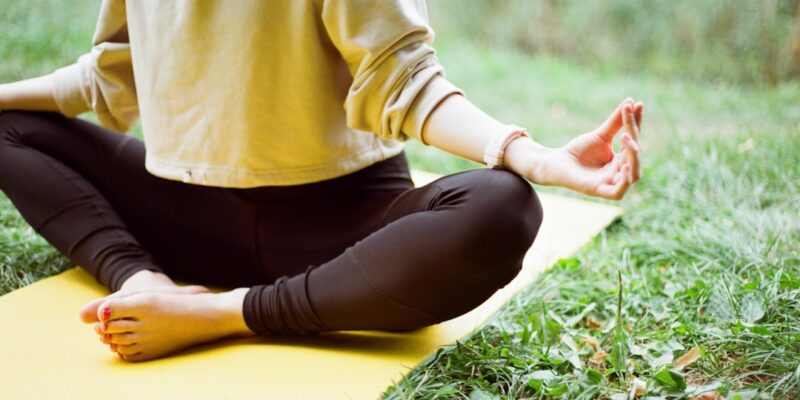
Mindful Movement: Stress Relief Practices
Mindful movement refers to the practice of engaging in physical activities with a heightened sense of awareness and presence. It involves paying attention to the sensations, movements, and breath during exercise or any form of physical activity. This practice can be a powerful tool for stress relief as it allows individuals to focus their attention on the present moment, promoting relaxation and reducing anxiety.
Key Takeaways
- Mindful movement can help reduce stress and promote relaxation.
- Benefits of mindful movement include improved physical and mental health.
- Mindful breathing techniques can be used to promote relaxation and reduce stress.
- Mindful yoga poses, tai chi, and qigong can be effective for stress relief.
- Incorporating mindful movement into daily life can lead to long-term stress relief.
Benefits of Mindful Movement for Stress Reduction
a) Physical benefits: Engaging in mindful movement can have numerous physical benefits that contribute to stress reduction. Regular physical activity has been shown to release endorphins, which are natural mood boosters. It also helps to improve cardiovascular health, increase energy levels, and enhance overall physical well-being. By incorporating mindfulness into movement, individuals can experience these physical benefits while also reducing stress levels.
b) Mental benefits: Mindful movement can have a positive impact on mental health by reducing symptoms of anxiety and depression. The practice of focusing on the present moment helps to quiet the mind and alleviate racing thoughts. It promotes a sense of calmness and clarity, allowing individuals to better manage stressors in their lives. Additionally, mindful movement can improve cognitive function, memory, and concentration.
c) Emotional benefits: Mindful movement can also have profound emotional benefits. By engaging in physical activity with awareness and intention, individuals can develop a deeper connection with their emotions and gain insight into their emotional well-being. This practice allows for the release of pent-up emotions and promotes a sense of emotional balance and resilience.
Mindful Breathing Techniques for Relaxation
Breathing plays a crucial role in regulating stress levels as it directly affects the autonomic nervous system. When we are stressed, our breathing tends to become shallow and rapid, activating the sympathetic nervous system and triggering the body’s stress response. By practicing mindful breathing techniques, we can activate the parasympathetic nervous system, which promotes relaxation and reduces stress.
Some techniques for mindful breathing include:
a) Deep belly breathing: Sit or lie down in a comfortable position. Place one hand on your belly and the other on your chest. Take a deep breath in through your nose, allowing your belly to rise as you fill your lungs with air. Exhale slowly through your mouth, feeling your belly fall. Repeat this process several times, focusing on the sensation of your breath entering and leaving your body.
b) 4-7-8 breathing: Close your eyes and take a deep breath in through your nose for a count of four. Hold your breath for a count of seven. Exhale slowly through your mouth for a count of eight. Repeat this cycle several times, allowing yourself to fully focus on the rhythm of your breath.
c) Box breathing: Imagine tracing the outline of a square with your breath. Inhale deeply for a count of four, hold your breath for a count of four, exhale for a count of four, and hold your breath again for a count of four. Repeat this pattern several times, visualizing the shape of a square as you breathe.
Mindful Yoga Poses for Stress Relief
| Yoga Pose | Description | Benefits |
|---|---|---|
| Child’s Pose | Kneel on the floor, touch your big toes together and sit on your heels. Lower your torso between your thighs and bring your forehead to the floor. | Relieves stress and anxiety, calms the mind, stretches the hips, thighs and ankles. |
| Downward-Facing Dog | Start on your hands and knees, with your hands slightly in front of your shoulders. Lift your knees off the floor and straighten your legs, pressing your heels toward the floor. | Reduces stress and fatigue, energizes the body, strengthens the arms and legs, stretches the hamstrings and calves. |
| Warrior II | Stand with your feet about 4 feet apart, turn your right foot out and your left foot in. Raise your arms to shoulder height and bend your right knee. | Increases focus and concentration, strengthens the legs, opens the hips and chest, improves balance. |
| Tree Pose | Stand with your feet together, shift your weight onto your left foot and place your right foot on your left thigh. Bring your hands to your heart center. | Improves balance and stability, strengthens the legs and ankles, calms the mind, increases focus and concentration. |
Yoga is a mindful movement practice that combines physical postures, breathing techniques, and meditation. It has been widely recognized for its ability to reduce stress and promote relaxation. The combination of movement and mindfulness in yoga allows individuals to release tension from the body while cultivating a sense of calmness and presence.
Some yoga poses that are particularly beneficial for stress relief include:
a) Child’s pose (Balasana): Kneel on the floor with your knees hip-width apart and toes touching. Sit back on your heels and fold forward, resting your forehead on the mat or a block. Extend your arms forward or alongside your body. Breathe deeply into your back and allow yourself to surrender to the pose, releasing any tension or stress.
b) Standing forward fold (Uttanasana): Stand with your feet hip-width apart. Hinge forward at the hips, allowing your upper body to hang over your legs. Bend your knees as much as needed to bring your chest closer to your thighs. Let your head and neck relax. Breathe deeply and feel the stretch in the back of your legs and spine.
c) Legs up the wall pose (Viparita Karani): Lie on your back with your legs extended up against a wall. Rest your arms alongside your body or place them on your belly. Close your eyes and breathe deeply, allowing yourself to fully relax into the pose. This gentle inversion helps to calm the nervous system and promote relaxation.
Tai Chi and Qigong for Mindful Movement and Stress Reduction
Tai Chi and Qigong are ancient Chinese practices that combine slow, flowing movements with deep breathing and meditation. These practices are often referred to as moving meditations as they promote mindfulness, relaxation, and stress reduction.
Tai Chi involves a series of choreographed movements that are performed in a slow, deliberate manner. It emphasizes balance, coordination, and flexibility. Qigong, on the other hand, focuses on cultivating and balancing the body’s vital energy or “qi” through gentle movements and breath control.
The benefits of Tai Chi and Qigong for stress relief include:
a) Stress reduction: The slow, rhythmic movements combined with deep breathing help to activate the parasympathetic nervous system, promoting relaxation and reducing stress levels.
b) Improved physical health: Tai Chi and Qigong can improve balance, flexibility, strength, and overall physical well-being. Regular practice can also help to alleviate chronic pain and improve cardiovascular health.
c) Mental clarity: The mindfulness aspect of Tai Chi and Qigong promotes mental clarity and focus. It allows individuals to let go of distracting thoughts and be fully present in the moment.
Mindful Walking and Jogging for Stress Relief
Walking and jogging can be transformed into mindful movement practices by bringing awareness to the sensations of the body and the breath. By focusing on the present moment during these activities, individuals can experience stress reduction and a greater sense of well-being.
To practice mindful walking or jogging:
a) Begin by bringing your attention to your breath. Notice the rhythm of your breath as you inhale and exhale.
b) Pay attention to the sensations in your body as you move. Notice the feeling of your feet hitting the ground, the movement of your legs, and the swing of your arms.
c) Engage your senses by noticing the sights, sounds, and smells around you. Allow yourself to fully immerse in the present moment.
d) If your mind starts to wander, gently bring your attention back to your breath and the sensations in your body.
Mindful Dancing and Movement Therapy for Stress Reduction
Dancing and movement therapy can be powerful tools for stress reduction when practiced mindfully. These practices allow individuals to express themselves creatively while also promoting a sense of mindfulness and presence.
To engage in mindful dancing or movement therapy:
a) Choose music that resonates with your emotions or uplifts your mood. Allow yourself to fully immerse in the music and let it guide your movements.
b) Focus on the sensations in your body as you dance or move. Notice how each movement feels and how it affects your mood and energy levels.
c) Let go of any self-judgment or expectations. Dance or move freely without worrying about how you look or what others may think.
d) Use dance or movement as a form of self-expression. Allow yourself to release any pent-up emotions or stress through your movements.
Mindful Stretching and Pilates for Stress Relief
Stretching and Pilates can be practiced mindfully to promote stress relief and relaxation. These practices focus on improving flexibility, strength, and body awareness while also cultivating mindfulness and presence.
To practice mindful stretching or Pilates:
a) Begin by bringing your attention to your breath. Take a few deep breaths, allowing yourself to relax and let go of any tension.
b) Slowly and mindfully move through each stretch or Pilates exercise. Pay attention to the sensations in your body and any areas of tension or tightness.
c) Focus on your alignment and form. Engage your core muscles and maintain proper posture throughout each movement.
d) Use your breath to deepen each stretch or movement. Inhale deeply as you prepare for a movement, and exhale as you release into the stretch or perform the exercise.
Mindful Meditation Practices for Stress Reduction
Meditation is a powerful practice for stress reduction when approached with mindfulness and intention. By focusing on the present moment and cultivating a non-judgmental awareness, individuals can experience a sense of calmness and relaxation.
Some techniques for mindful meditation include:
a) Breath awareness meditation: Find a comfortable seated position and bring your attention to your breath. Notice the sensation of the breath entering and leaving your body. Whenever your mind starts to wander, gently bring your attention back to your breath.
b) Body scan meditation: Lie down in a comfortable position and bring your attention to different parts of your body, starting from your toes and moving up to the top of your head. Notice any sensations or areas of tension without judgment.
c) Loving-kindness meditation: Begin by sending loving-kindness to yourself by silently repeating phrases such as “May I be happy, may I be healthy, may I be safe.” Then extend these wishes to others, starting with loved ones, neutral people, and even difficult individuals.
Incorporating Mindful Movement into Daily Life for Long-Term Stress Relief
In order to experience long-term stress relief, it is important to incorporate mindful movement into daily life. Here are some tips for doing so:
a) Start small: Begin by setting aside a few minutes each day for mindful movement. Gradually increase the duration as you become more comfortable with the practice.
b) Find activities you enjoy: Choose physical activities that you genuinely enjoy and that resonate with your interests and preferences. This will make it easier to incorporate mindful movement into your daily routine.
c) Create a routine: Establish a regular schedule for mindful movement. This can help to make it a habit and ensure that you prioritize this practice in your daily life.
d) Be consistent: Consistency is key when it comes to experiencing the long-term benefits of mindful movement. Aim to practice regularly, even if it’s just for a few minutes each day.
Mindful movement is a powerful tool for stress relief that offers numerous physical, mental, and emotional benefits. By incorporating mindfulness into various forms of physical activity, individuals can experience relaxation, improved well-being, and a greater sense of presence. Whether through yoga, Tai Chi, walking, dancing, or meditation, there are countless ways to incorporate mindful movement into daily life and cultivate long-term stress relief. So why not give it a try and see how it can positively impact your overall well-being?
FAQs
What are mindful movement practices?
Mindful movement practices are physical activities that involve paying attention to the present moment and being fully engaged in the activity. These practices can include yoga, tai chi, qigong, and other forms of movement meditation.
How do mindful movement practices help with stress relief?
Mindful movement practices can help reduce stress by promoting relaxation, improving mood, and increasing mindfulness. These practices can also help reduce muscle tension and improve flexibility, which can help alleviate physical symptoms of stress.
What are the benefits of practicing yoga for stress relief?
Yoga can help reduce stress by promoting relaxation, improving mood, and increasing mindfulness. It can also help reduce muscle tension and improve flexibility, which can help alleviate physical symptoms of stress. Additionally, yoga has been shown to improve sleep quality, which can also help reduce stress.
What is tai chi and how does it help with stress relief?
Tai chi is a form of Chinese martial arts that involves slow, gentle movements and deep breathing. It has been shown to help reduce stress by promoting relaxation, improving mood, and increasing mindfulness. Tai chi can also help improve balance and flexibility, which can help reduce the risk of falls and injuries.
What is qigong and how does it help with stress relief?
Qigong is a form of Chinese meditation that involves slow, gentle movements and deep breathing. It has been shown to help reduce stress by promoting relaxation, improving mood, and increasing mindfulness. Qigong can also help improve balance and flexibility, which can help reduce the risk of falls and injuries.


















